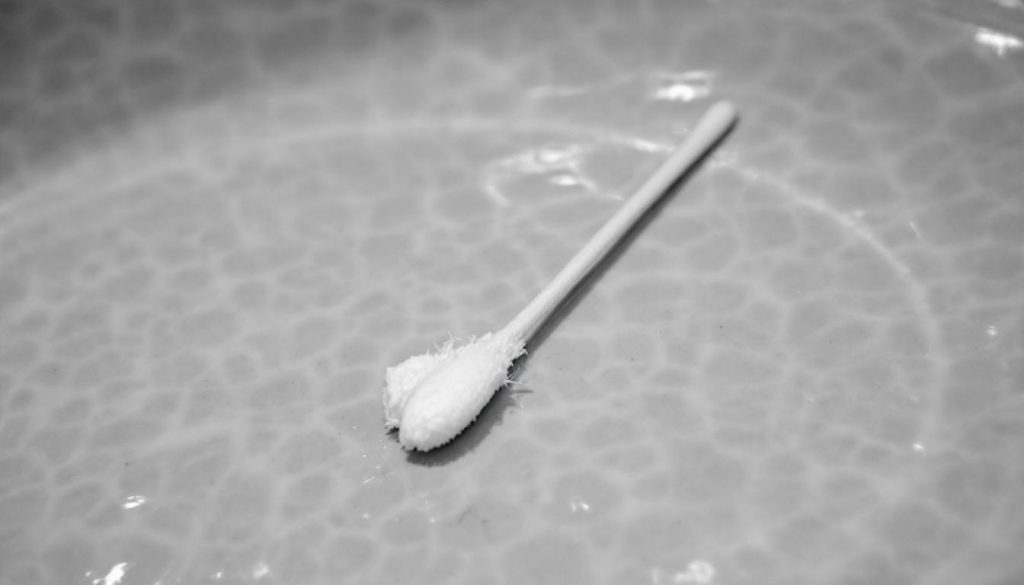Using cotton swabs as part of ear hygiene is a widespread habit, yet medical experts consistently caution against this practice due to its significant risks to ear health. The American Academy of Otolaryngology–Head and Neck Surgery and various specialists strongly advise against inserting any small objects, including cotton swabs, into the ear canal. Otolaryngologist Tonia L. Farmer explains that while cotton swabs are designed for external use, their insertion into the ear often pushes earwax deeper inside. This can lead to blockages, ear pain, and even eardrum perforations, posing serious complications beyond mere discomfort.
Evidence from numerous studies confirms these dangers on a broad scale. For instance, the Hearing Health Institute of Salus University reveals that over 260,000 American children have required medical attention due to cotton swab-related ear injuries over two decades. Injuries in adults range from temporary discomfort to cases that necessitate surgical intervention. Younger children and elderly individuals face even higher risks due to the fragility of their ear structures, heightening the importance of cautious ear care in these groups.
Contrary to the common perception that earwax is unwanted debris, it actually serves essential protective functions. According to Dr. Bruce Stewart from the University of Arizona College of Medicine, earwax acts as a natural barrier against dust, bacteria, and insects while maintaining moisture within the ear canal. The ear benefits from a natural self-cleaning system, where movements of the jaw during talking or chewing gradually expel excess wax. Excessive attempts to remove earwax, especially by inserting objects into the ear, can damage this system, potentially leading to dryness, irritation, or even eczema, which impairs auditory protection.
Improper use of cotton swabs frequently exacerbates ear problems by compacting wax into plugs rather than removing it. This can result in symptoms such as ear pain, hearing loss, dizziness, and tinnitus. The most frequent injuries include scratches inside the ear canal and perforations of the eardrum. Such injuries, combined with wax accumulation, elevate the risk of infections that sometimes require antibiotics or surgery to resolve. Medical experts warn that signs like persistent ear pain, discharge, sudden hearing loss, fever, or intense pressure should prompt immediate professional consultation rather than self-treatment.
Safe ear cleaning routines involve avoiding insertion of objects into the ear canal. Cleaning should focus on the external ear, using a damp cloth to wipe away visible wax gently. When excessive earwax causes discomfort or blockage, treatments like wax-softening drops or gentle irrigation with warm water and a rubber syringe can be done under medical guidance. Specialists employ controlled irrigation or special instruments under direct visualisation to remove wax safely without damaging delicate ear structures. Daily hygiene, specifically routine bathing and carefully drying only the external ear, typically suffices to maintain ear cleanliness.
The popularity of alternative and risky methods, such as ear candles or suction devices, is rising through social media, but these are strongly discouraged by medical professionals. Dr. Stewart highlights that ear candles lack clinical support and pose significant injury risks themselves. The consistent medical advice remains clear: avoid inserting anything smaller than an elbow into the ear canal.
Preventing ear damage entails rejecting the use of cotton swabs and other objects intended to penetrate the ear canal. Experts emphasize that the ear’s natural cleaning mechanism is effective for maintaining auditory health when left undisturbed. Regular hearing check-ups, especially for children and older adults, help identify and address issues early. Additionally, minimising exposure to loud noises, moderating headphone usage, and maintaining the external ear’s hygiene contribute to preserving hearing function and overall quality of life. Consulting an otolaryngologist at the first sign of ear discomfort or changes remains the safest course of action to avoid complications.
This convergence of data from institutions such as the National Institute on Deafness and Other Communication Disorders, Johns Hopkins Medicine, and the Malta Health Services Authority underscores the need for public education on these risks. Across the board, the consensus is firm: cotton swabs do more harm than good inside the ear, and safe ear care prioritises professional guidance and respect for the ear’s natural defences.
📌 Reference Map:
- Paragraph 1 – [1], [2], [4], [7]
- Paragraph 2 – [1], [6]
- Paragraph 3 – [1], [3], [5]
- Paragraph 4 – [1], [3], [5], [7]
- Paragraph 5 – [1], [3], [4]
- Paragraph 6 – [1], [3]
- Paragraph 7 – [1], [3], [7]
- Paragraph 8 – [1], [2], [6], [7]
Source: Noah Wire Services

